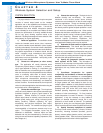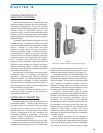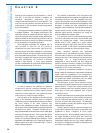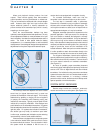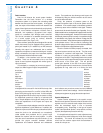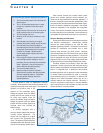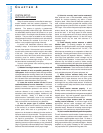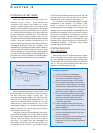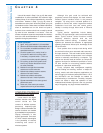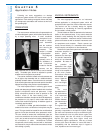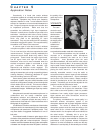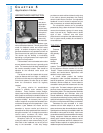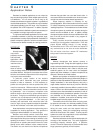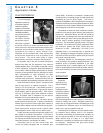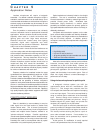
It should be noted in Step 3 (on pg. 43) that certain
combinations of active transmitters and receivers might
indicate pickup of an individual transmitter by more than
one receiver. However, in Step 7 (on pg. 43), when all
transmitters are active, each should be picked up by just
its intended receiver. Unless there is audible interference
when all transmitters are on this should not pose a
problem, since a receiver should not normally be turned
up when its own transmitter is not active. Once the
wireless microphone systems have passed this checkout
there are a few recommendations to achieve successful
operation during the performance:
Show Operation:
1) Again, verify good batteries in all transmitters.
2) Receivers should be muted until transmitters are on.
3) Do not activate unneeded transmitters or their
associated receivers.
4) Once the system is on, use the "mute" or
"microphone" switch to turn off the audio
if necessary, not power switch. (This is not
a concern for tone-key squelch systems.)
5) Do not bring up the sound system audio
level for any receiver that does not have
an active transmitter.
6) Maintain line-of-sight from transmitter
antennas to receiver antennas.
7) Maintain transmitter-to-receiver antenna
distance of at least 5 meters.
8) Maintain transmitter-to-transmitter
distance of at least 1 meter if possible.
9) Operate transmitters in the same general
performance area.
10) At the end of the event mute receiver
outputs before turning off transmitters.
COMPUTER-CONTROLLED
WIRELESS SYSTEMS
It was noted in the digital
wireless selection that digital
control circuits are now
common in wireless systems,
particularly frequency-agile
designs. Various transmitter and
receiver functions are handled
by embedded microprocessors.
Display information is also
digitally generated. One result
of these internal technologies
is the possibility of external
monitoring and control of
wireless systems.
Although this goal could be achieved with
proprietary controls and displays, the most common
wireless system interface device is the personal
computer. By using such a universal platform it is
possible to monitor and control large-scale wireless
installations from both local and remote points.
Hookup is usually through either serial or Ethernet
connections.
Typical monitor capabilities include battery
condition, RF signal strength, audio level and diversity
status. Typical receiver control functions include
frequency selection, squelch level set, and
alphanumeric channel naming. In addition, some
systems can automate the selection of appropriate
operating frequencies without prior knowledge of the
RF environment.
Such systems have a set-up mode during which
the receiver functions as an automatic radio scanner to
find open channels. This scan-mode can be under the
control of an onboard microprocessor in an individual
receiver or externally controlled by a computer. The
receiver can also be made to function as a simple RF
spectrum analyzer for interference problems or as an
RF level recorder for uncovering possible antenna
problems in a pre-show walk-through.
Finally, computer data management capability
permits creating and recalling “scenes” or setups for
touring, rentals, and other temporary applications, as
well as logging of wireless system performance. All of
this information can be reviewed as needed for
troubleshooting or maintenance. Presently, computer
control can assist in setup and operation of even
moderate-sized wireless rigs and is the only practical
way of integrating very large wireless installations.
Selection
and Operation
of Wireless Microphone Systems
44
C HAPTER 4
Figure 4-8: computer controlled receivers



